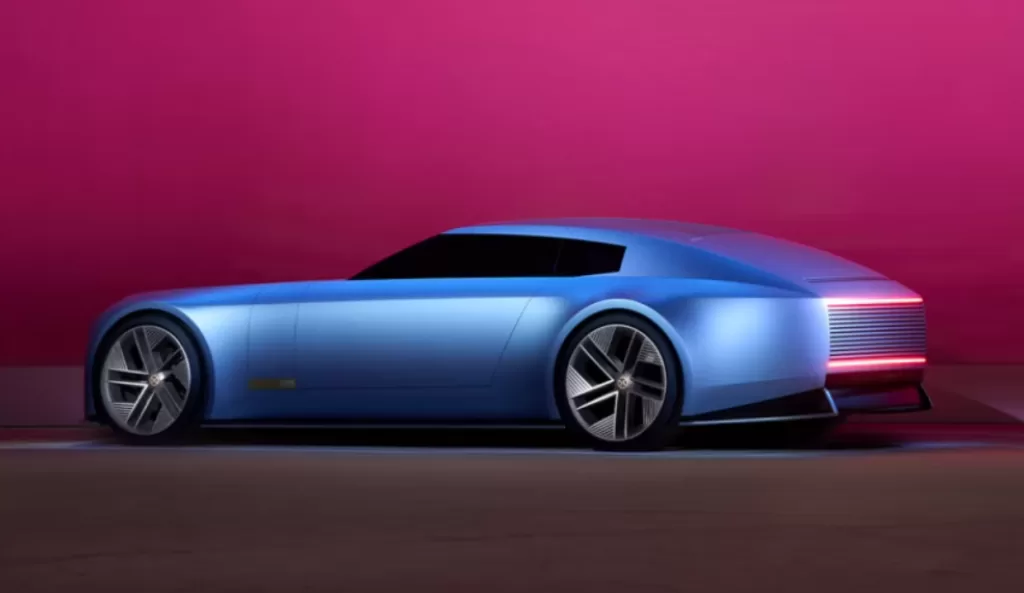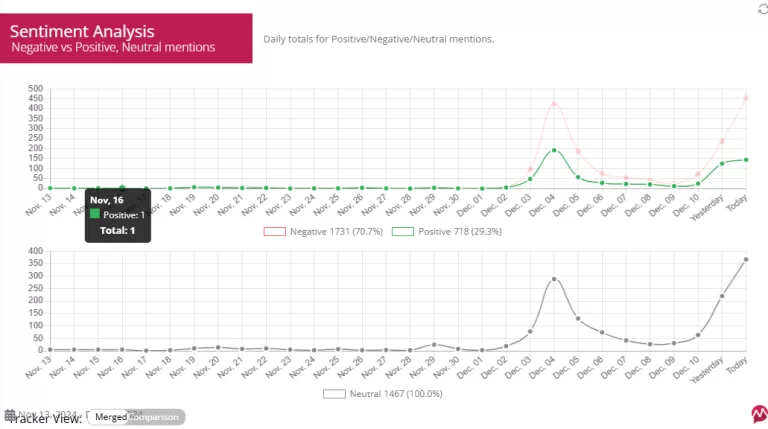How Jaguar “Copy Nothing” broke the internet
How Jaguar "Copy Nothing" broke the internet
Jaguar, recently launched their "Copy Nothing" rebranding campaign. And, people have thoughts!


Soooooo, the Internet is Pissed at Jaguar...
Jaguar, one of the most iconic sports car and luxury vehicle brands, has recently launched a colourful “Copy Nothing” rebranding campaign. And, people have thoughts!
Up until last week when you thought of Jaguar, you probably thought “Jaaaag”. Elegance, prestige, British refinement and performance. A bit of a gangster maybe but with a healthy dose of the Queen and The Equalizer. Right? But this latest campaign? It’s loud, bold, and… divisive.
Let’s examine what happened, what we can learn, and how this campaign might be a calculated move. Spoiler: It’s not all bad.
What Happened?
Jaguar is hitting the reset button. New logo. New branding. New messaging. New everything. It is shifting its strategy to offer fully electric cars only. To meet this goal, the company chose to pause the sales of new Jaguar cars in the UK until at least 2026. This means it won’t be possible for people to get a new Jaguar car in the UK until the launch of the new electric-only vehicles in 2026.
But here’s the kicker—this campaign leans heavily into vibrant colours, fashion-forward models, and avant-woke vibes. It is the antithesis of Jaguar’s legacy. So much so that their ads didn’t even feature a single car. Not. One. Car.
This has stirred up the internet no more than we have come to expect from a culture wars world. The rallying cry of “go woke, go broke” has been particularly frequent in appearance. Probably the bravest thing that Jaguar’s marketing team did was leave the comments section of YouTube on. Think headlines like, “Where’s the car?” and “Jaguar’s pronouns are Was/Were”.
And the anti woke warriors mourning lost British heritage have a point. Even if they are typing it from the inside a German made car. The ad is giving Zoolander blue steel, not Bond in a seven time Le Mans Winner.



The Bigger picture
First, it is important to emphasize the context. Five years ago, Jaguar Land Rover (JLR) was facing financial difficulties, but it has managed to turn things around. Now profitable they are reducing debt. The stealth bling Range Rover’s ability to sell exceptionally pricey SV special editions has been a big driver of profitability with each averaging over £165,000 or SAR 1.1m.
This is significant. In 2019, the average sale price for their cars was £44,000. They were selling 660,000 units without turning a profit. By early 2023, this was £71,000 and 430,000 units.
Each Range Rover and Land Rover sold now generates about £20,000 of bottom line profit. 75% of JLR’s orders are for Range Rover, Range Rover Sport, and Defender’s. Despite the drop-dead gorgeous F-Type, Jaguar only sold 64,241 units worldwide last year. Out of JLR’s total 430,00 units. Each Jaguar sold lost money.
Consequently, JLR’s Reimagine strategy involves repositioning Jaguar as a super lux EV automaker. So this complete rebrand is part of a strategy. It represents a clear shift from the past, moving into a new era of ultra-luxury electric vehicles with a brand identity that is artistic, fashionable, sustainable, innovative, and inclusive.
TRust the process
According to the head of the Jaguar brand, the company expects to let go of most of its current customers. “We assume that 10-15% of our current Jaguar customers will follow us, so relatively few”, said Rawdon Glover, head of the Jaguar brand, in an interview with Motor1.
So what if this is what Jaguar (and their agency) wanted? A load of Bufton-Tuftons frothing at the mouth gets Jaguar on everyone’s lips. People choose sides, and Jaguar is getting a TON of free press.
Is this attracting its new audience?

Key Campaign Metrics
1. Explosive Search Volume Growth
Jaguar saw a 250% increase in search volume, reaching 7.4 million searches in November 2024, compared to the previous month. This indicates a significant spike in awareness and curiosity generated by the rebrand. Almost all of that was in the last week when the story broke.
2. Social Media Buzz
- Total Mentions: The campaign generated 4,846 mentions across platforms during the period analysed, with Facebook accounting for 51.7% of mentions, followed by YouTube at 20.6% and Twitter at 13.5%.
- Social Reach: Jaguar’s social reach expanded to 134.4 million unique impressions, an extraordinary achievement for a luxury automotive brand.
- Engagement: The campaign drove 88 million engagements in a week, a mix of likes, shares, and comments that demonstrate the rebrand’s ability to spark conversation.
3. Audience & share of Voice
A core objective of the rebrand was to attract a younger demographic. Pre-launch, only 30% of Jaguar’s audience was aged 18-34. Post-launch, this number rose to 50%, surpassing Tesla in this crucial demographic. This is a notable success in aligning the brand with the future EV market.
Jaguar’s share of voice surged to 53.3% during the campaign, eclipsing Tesla (“14.6%”) and cementing Jaguar as a hot topic in the automotive industry.
4. Sentiment Analysis
- Positive Sentiment: Only 18.3% were positive, with users praising the boldness and artistic vision of the rebrand.
- Negative Sentiment: A significant 44.2% expressed criticism, particularly over the perceived disconnect from Jaguar’s heritage and the lack of product-focused visuals.
- Neutral Sentiment: 37.5% A Mixed Bag reflecting either curiosity or indecision.
5. Emotional Resonance
Emotion analysis reveals:
- Joy: The most dominant emotion at 1.7k mentions, reflecting excitement for the new direction.
- Anger: Close behind at 1.4k mentions, driven by disappointment among traditionalists.
- Sadness and Fear: Together, these accounted for 503 mentions, underscoring apprehension about Jaguar’s future.
Reengineering Elegance: Jaguar’s Bold Reset
Jaguar’s “Copy Nothing” campaign is bold—and I love that. It’s an A+ for ambition, but the execution feels like a missed opportunity to strike the perfect balance between modernisation and heritage. There’s a chance Jaguar wanted this reaction. Controversy equals free press, right? If that’s the case, they’ve succeeded in getting the world’s attention. But now comes the hard part—delivering a product that lives up to the hype. Here’s what stands out to me:
What Missed the Mark
❌ Heritage Left in the Dust: Jaguar’s long-standing identity as a symbol of British elegance and performance seems lost in the neon noise. For a brand with nearly 90 years of history, this is a missed opportunity.
❌ Trendy not cool: The campaign feels like a mix of every trend imaginable. Vibrant colours, edgy models, abstract visuals—it’s a lot. And while it’s attention-grabbing, it’s not distinctly Jaguar.
❌ Product Spotlight MIA: For a car brand, not showing the car is a risky move. The campaign dazzles, but it’s missing a direct link to what makes Jaguar an apex predator—its vehicles.
The Good Stuff
Let’s give credit where it’s due. Here’s what Jaguar nailed:
✅ Taking a Risk: Reinventing a brand is no small feat, and Jaguar’s boldness deserves applause. They’ve stepped out of their comfort zone in a big way.
✅ Targeting Younger Audiences: The numbers don’t lie. The campaign helped push Jaguar’s audience in the 18-34 age bracket from 30% to 50%, even surpassing Tesla in this coveted demographic.
✅ Creating Buzz: Search volume surged 250% in November, reaching 7.4 million. Their share of voice on social media is dominating Tesla, with 63M engagements. Love it or hate it, people are talking about Jaguar.
✅The ad hyped the actual car launch so well. The launch, held at the Miami Art Week was the only one I have looked out for in an age.
✅ The 2-door concept car hints at a great new look.
From Points to Purpose How Loyalty Became the Heart of the Experience Economy
Loyalty is evolving. Discover how brands like Emirates are shaping cultural ecosystems—and how Living Lab is turning engagement into lasting impact.





